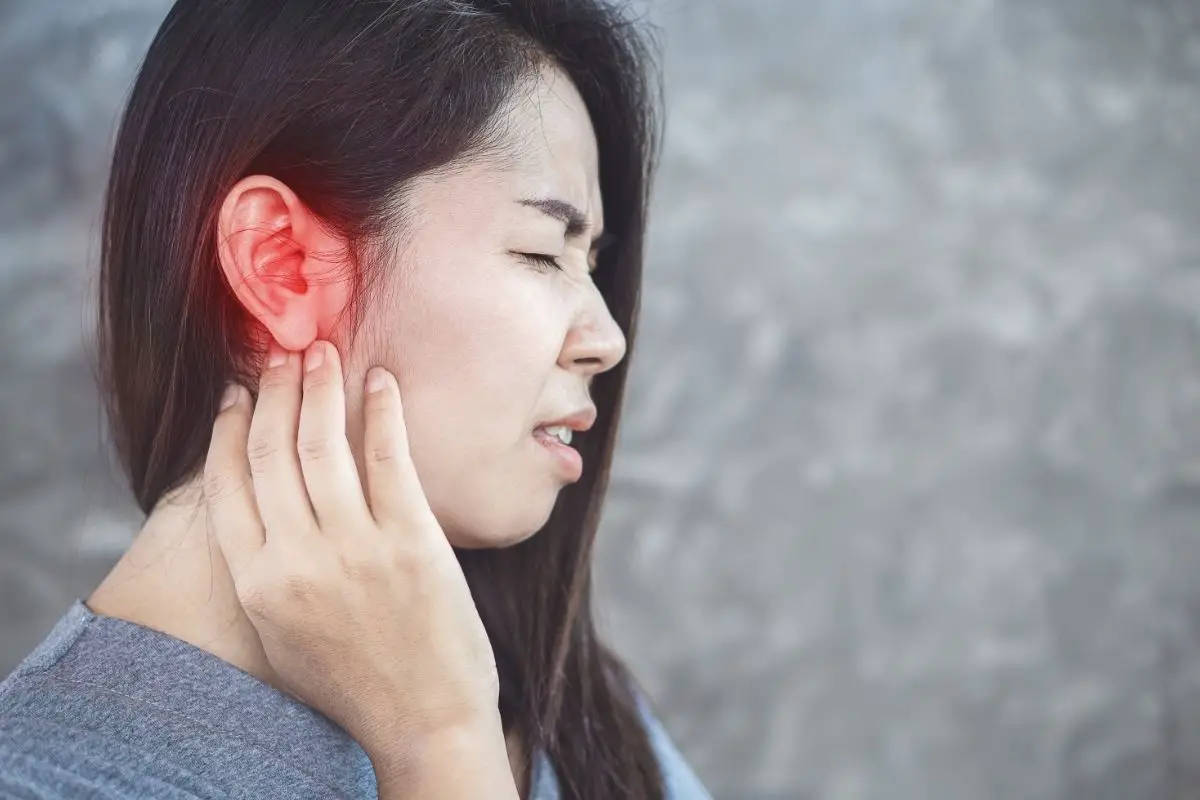Cervical Spondylitis is a serious condition that revolves around the neck’s bones, discs, and joints. With age, spinal discs can break down slowly and result in chronic neck pain. Fortunately, some fantastic acupressure points for cervical Spondylitis can help improve your way of living.
Can Acupressure Cure Cervical Spondylosis?

During an evaluation of the efficacy of acupuncture, a test was performed with seven acupoint needles on patients suffering from cervical spondylosis. At least 60 patients were divided into two groups. Group A received acupoint-penetrating needles while Group B received non-relevant acupuncture treatment. It was concluded that acupoint-penetrating needles with traction prove to be more effective.
If you are suffering from neck pain, it could be caused by cervical spondylosis, but of course, connect with your primary care physician first. In a study regarding the effectiveness of acupuncture for neck pain caused by cervical Spondylitis, it was found that acupuncture is effective for overall pain relief in the immediate and short-term post-treatment period.
If you’re curious, read on for a list of the best acupressure points for cervical Spondylitis. By stimulating all five of these acupoints daily, it will take up to 30 days to see positive results in relieving cervical spine diseases.
Acupoint: GB-20 (Other Names: Gallbladder-20/Feng Chi/Wind Pool)
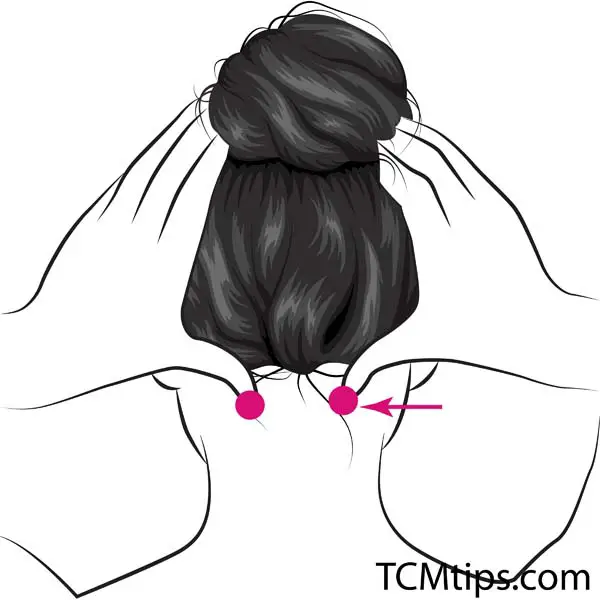
The first on the list for acupressure points for cervical Spondylitis is GB-20, also known as Feng Chi or Wind Pool. This pressure point consists of two mirrored pressure points that sit at the back of the neck, near the base of your skull. To find the specific spot of this acupoint, slide both of your thumbs to the back of your neck. Each thumb should sit on either side of your spine.
Once you reach the base of your skull, you will feel two depressions. Apply firm pressure here while inhaling deeply. Move your thumbs in a circular motion for extra sensation if you feel comfortable doing so.
The GB-20 pressure point is also known to help relieve headaches during pregnancy and neck discomfort. Not to mention, it is one of the best acupressure points to stay awake when you’re feeling drowsy.
Acupoint: SI-12 (Other Names: Small Intestine-12/Bing Feng/Grasping the Wind)
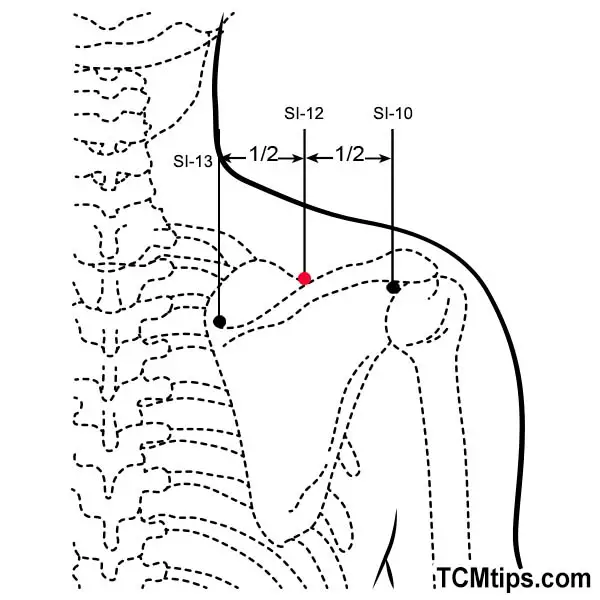
Next up on the list is the pressure point SI-12, also known as Grasping the Wind. This acupoint is related to shoulder functionality. You can find this pressure point by lifting your arm and, using one hand, finding the depression spot of the scapular spine.
This region is two to three finger widths down from the top of the shoulder, precisely between the shoulder tip and the center of your back. Once located, apply firm pressure for 2 minutes using opposite three fingers; your index finger, middle finger, and ring finger.
While this is one of the best acupressure points for cervical Spondylitis, it also has other beneficial uses. Due to its primary connection with shoulder functionality, SI-12 is one of the best acupressure points for shoulder blade pain.
Acupoint: GB-21 (Other Names: Gallbladder-21/Jian Jing/Shoulder Well)
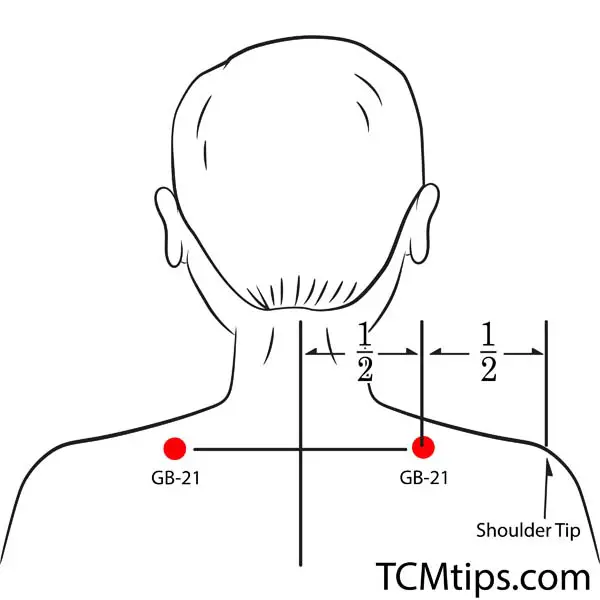
GB-21, also known as Jian Jing in Chinese, is located on your upper back, between the shoulder blades. Like pressure point Feng Chi, GB-21 also has mirrored acupoints that sit between the spine and the start of each shoulder tip. Use your middle finger to apply firm pressure while slowly rotating your shoulders.
The GB-21 pressure point has immense effects on the body, such as increased metabolism, blood circulation, and relieving muscle tension. Additionally, it falls under the list of acupressure points to reduce arm fat.
Acupoint: LI-11 (Other Names: Large Intestine-11/Qu Chi/Pool at the Crook)
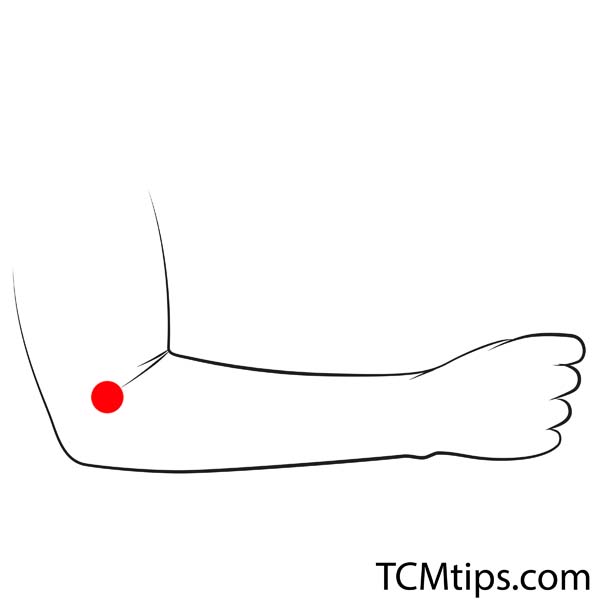
LI-11 is another promising acupressure point for cervical Spondylitis that can be found on the elbow. To locate its precise location, do a slight bend to your arm and locate the end of the crease that forms. This pressure point helps reduce inflammation, improve blood circulation, and is one of the acupressure points for hives breakouts.
Keep in mind that stimulating this particular pressure point may cause slight discomfort, but it packs a powerful punch of benefits. Apply firm pressure for an extended time for maximum stimulation.
Acupoint: TE-16 (Other Names: Triple Energizer-16/Tian You/Sky Window)
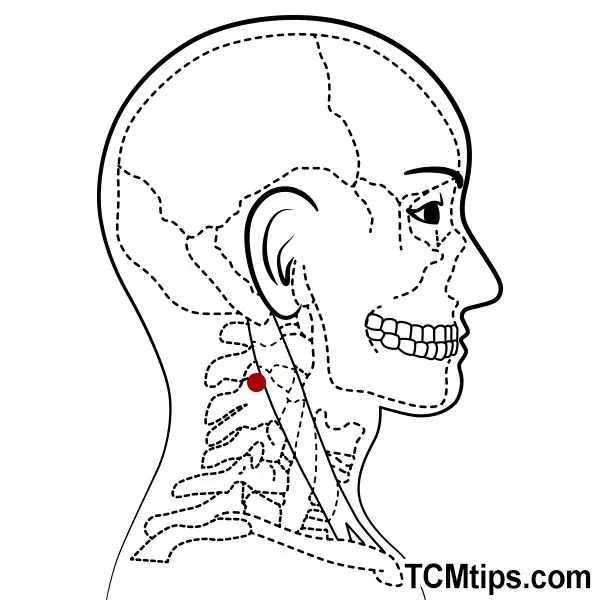
The Chinese meaning behind the TE-16 pressure point is Window of Heaven. This acupoint sits near the end of your jawline underneath your ear. To locate this pressure point, trace your jawline using a finger up until you feel the end of it.
The acupoint sits about two to three finger widths from the end of your jawline. Using your thumb, apply firm pressure for up to three minutes. Feel free to stimulate the acupoint on both sides of your head at the same time.
Some other functionalities that come with TE-16 include relieving headaches, dizziness, puffy face, and in some instances, improving hearing. Stimulating this pressure point can serve well as one of the neck exercises that help with chronic neck pain.
Acupuncture and acupressure have shown promising results in improving a way of life. This traditional Chinese medicine has become a trusted treatment among psychiatric disorders, among several other health conditions. It’s no surprise these acupoints are some of the best acupressure points for cervical Spondylitis.

Try our Anti-Aging Gua Sha Tool designed to bring out your skin’s natural glow.
Best Gua Sha Product- Anti-Aging: The tool is designed to target 11 specific aging signs such as wrinkles and sagging skin. By following the 7-step routine, users can improve skin firmness and reduce fine lines naturally.
- Enhances Skincare Routine: It works effectively with serums and lotions, boosting absorption and efficacy of skincare products.
- Visible Skin Improvement: Users can expect a smoother complexion, reduced puffiness, and a more youthful appearance.
 P. Sze
P. Sze 



